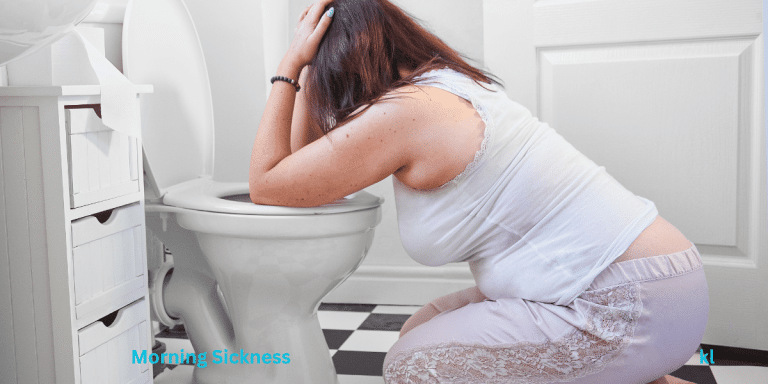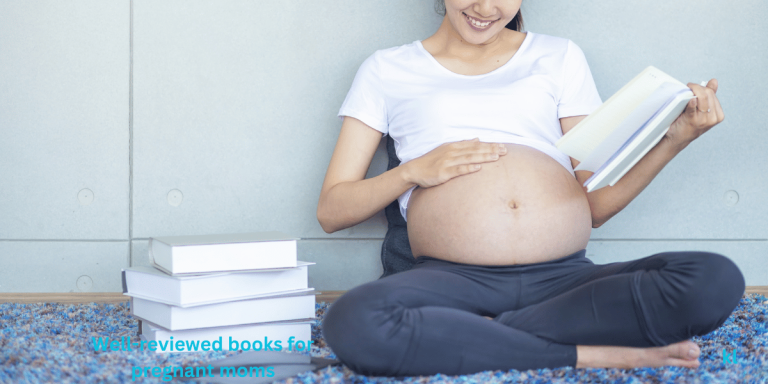Bringing a newborn home is one of the most exciting yet nerve-wracking moments in any parent’s life. With all the anticipation, making sure your home is set up to welcome your little one becomes essential.
From choosing the right crib and creating cozy sleep spaces to babyproofing every corner—preparation can seem overwhelming.
But don’t worry! With Newborn-Ready Home: What to Expect and How to Prepare, you can turn your home into a baby-friendly haven that makes those first few months much smoother. So, let’s break down how to make your home newborn-ready!
Creating a Safe Sleep Environment
According to the National Institutes of Health( NIH), creating a safe sleep area can help reduce a baby’s risk for Sudden Infant Death Syndrome (SIDS) and other sleep-related deaths, such as accidental suffocation.
Trust me, creating a safe sleep space for your newborn doesn’t have to be complicated. With a few essentials and some key safe sleep practices, you’ll be on your way to giving your baby the safest snooze spot possible.
The Importance of Selecting a Safe Crib and Mattress
A safe crib and mattress are essential items on your baby gear checklist. Selecting the right ones lays the foundation for creating a secure and comfortable sleep environment for your little one.
The crib should meet current safety standards (no drop sides or decorative cut-outs that tiny limbs can get stuck in).
I learned that crib slats should be no more than 2 3/8 inches apart—that’s about the width of a soda can. It sounds specific, but this prevents any unfortunate wedging incidents.
The mattress should fit snugly within the crib, with no more than two fingers’ width between the mattress and the crib’s sides.
For newborns, a firm mattress is non-negotiable. Soft, plush surfaces might look cozy, but they pose a significant risk.
A pro tip: double-check that your crib bedding is fitted and made of breathable materials—safe crib bedding should be simple, not fluffy or padded.
Safe Sleep Guidelines and How to Follow Them (e.g., “Back to Sleep”)
Remember the old saying, “Back is best”? It’s more than just a catchy phrase. Always place your newborn on their back for sleep, as this position significantly reduces the risk of Sudden Infant Death Syndrome (SIDS).
When my baby first started rolling, I would check on them every hour (okay, maybe every 15 minutes) until I realized that as long as they started on their back and rolled over on their own, it was okay.
The sleep space should be free of toys, pillows, or loose blankets. I know it can be tempting to add those adorable plush toys or decorative pillows, but they’re just not safe in the crib.
Instead, consider cozy sleep solutions like wearable sleep sacks or swaddles. These keep your little one warm without the suffocation risk that loose blankets can pose.

Using Swaddles, Sleep Sacks, and Crib Bumpers (and What to Avoid)
Swaddling can be a lifesaver during those early days when your baby is adjusting to life outside the womb. It mimics the snug feeling they were used to and can help prevent startling during sleep.
However, swaddles should always be snug around the chest but loose around the hips to prevent hip dysplasia. When your baby shows signs of rolling, it’s time to switch to a sleep sack to maintain a safe sleep space.
Speaking of crib accessories, steer clear of crib bumpers, even if they’re marketed as “breathable.” I learned the hard way that these bumpers are more decorative than practical, and they pose a risk of entanglement or suffocation. It’s better to keep the crib clear and simple—nothing but a fitted sheet and your baby.
Proper Ventilation and Temperature Control
A comfortable baby room isn’t just about the aesthetics—it’s about functionality, too. Good nursery ventilation requirements ensure the air is fresh and clean. If you’re using a fan, keep it out of reach but positioned to circulate air gently throughout the room.
Newborn temperature control is another key aspect. According to most baby room temperature guides, maintaining the room between 68°F and 72°F is ideal. An easy way to check this is by using a room thermometer or a baby monitor with temperature tracking.
Blackout Curtains and Lighting Options
Getting the lighting just right can make nap time and bedtime much smoother. Nursery lighting options should include blackout curtains to help keep the room dark during daytime naps and early summer evenings.
Pair this with a dimmable nightlight for those late-night feedings and diaper changes. It’s a lifesaver when you’re trying to soothe your baby back to sleep without waking them completely.
Preventing Newborn Sleep Hazards
Prevention is all about routine checks and staying informed. Make it a habit to scan your baby’s sleep space daily for any items that might have entered, whether it’s a stray pacifier or an older sibling’s toy.
Ensuring that your baby’s environment is clean and free from allergens is also important—regularly washing crib sheets with baby-safe detergent can help keep their space fresh and safe.
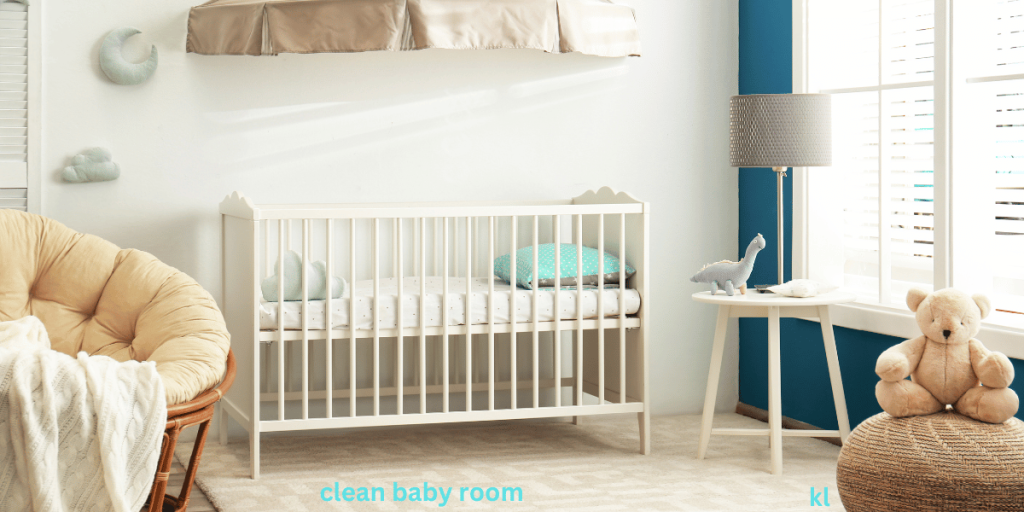
Creating a safe sleep environment is all about being mindful and prepared. With these tips and must-have baby safety items, you’ll not only rest easier but also create the ideal sleep space where your little one can rest safely.
And as any new parent knows, those peaceful moments when your baby sleeps soundly? Absolute gold!
Essential Nursery Setup Tips
Setting up a nursery goes beyond just picking out the cutest crib or adorable wall art. Trust me, it’s all about making the space functional and safe for those 24/7 demands of a newborn.
Here’s what I learned (sometimes the hard way) about organizing diapers, clothes, and all those baby essentials so you’re ready when the little one arrives.
How to Organize Diapers, Clothes, and Baby Essentials for Easy Access
Starting with the baby closet organization, consider maximizing the space using smart, adjustable shelving units. Closet organizers with compartments, hanging shelves, and small baskets can be lifesavers for neatly arranging clothes, swaddles, and extra linens.
You’ll want to consider baby storage solutions that allow for easy access while keeping everything tidy. Don’t hesitate to get creative with your space; even a simple tension rod can add an extra row for hanging tiny outfits.
Drawer dividers are another must-have for nursery drawers. These help keep onesies, socks, and bibs from turning into a jumbled mess.
I once thought throwing everything in one drawer would save time, but all it did was create chaos. Lesson learned—dividers for the win.
Size-Based Clothing Organization
One thing I didn’t fully appreciate until my baby started outgrowing clothes overnight was the importance of a size-based clothing organization.
To save yourself from digging through heaps of onesies at 2 a.m., try organizing clothes by size right from the start. Use labeled hangers or shelf dividers to separate newborn sizes from 3-6 months, 6-9 months, and so on. This makes it simple to grab what you need without second-guessing whether it fits.
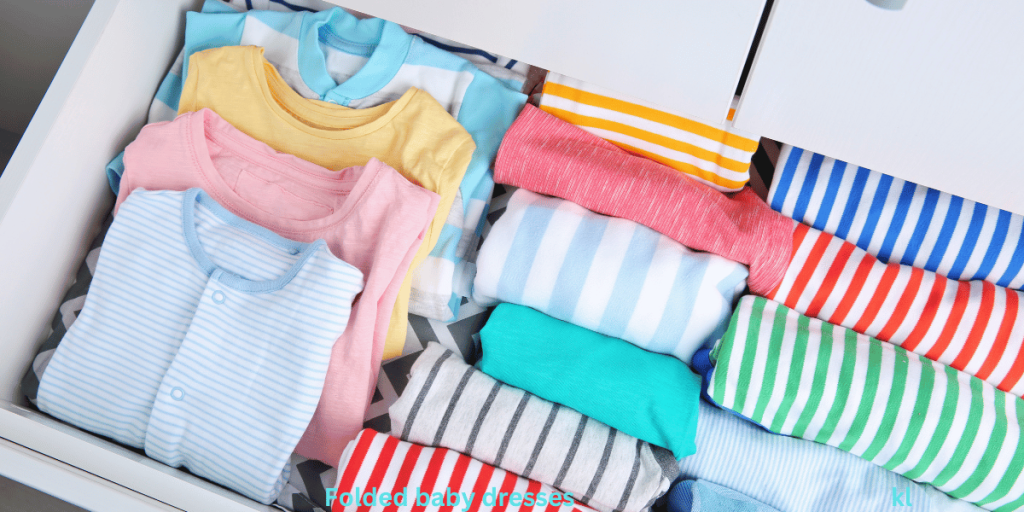
Storing newborn essentials like burp cloths, swaddles, and pacifiers should also be planned out. Small baskets or bins with labels make it easy to find what you need at a moment’s notice.
You might even consider using a rolling cart that can move from room to room; it’s a lifesaver for keeping frequently used items close by.
Practical Storage Solutions for Small Spaces
If you’re working with a smaller room or apartment, don’t worry—you can still create a functional and organized nursery with some smart storage solutions for small spaces. Vertical space is key here.
Install shelves above the changing table for items like diaper cream and baby lotion. I also recommend getting furniture that pulls double duty, like a crib with built-in drawers or a changing table that doubles as a dresser.
Hanging organizers that fit over doors or on the side of the crib can hold baby essentials like extra pacifiers, wipes, and soft toys. And don’t underestimate the power of under-crib storage bins. They’re perfect for stashing bulkier items like extra diapers or blankets.
Choosing Calming Colors and Lighting to Help with Nighttime Feeds
Choosing the right nursery furniture and decor is fun, but color and lighting are what make the room feel like a peaceful sanctuary. Soft, neutral tones or pastels can create a calming effect. You want the nursery to be a place where both you and your baby feel relaxed, especially during those nighttime feedings.
As for lighting, make sure you’ve got layered options. A dimmable lamp or nightlight can be invaluable during late-night feedings or diaper changes when you don’t want to turn on the main light and fully wake the baby (or yourself).
Maintaining Cleanliness in the Nursery
One thing that often gets overlooked in nursery safety checks is maintaining cleanliness. Babies can be sensitive to dust, mold, and other allergens, so regular cleaning is essential.
Use baby-safe cleaners and wipes for daily wipe-downs of surfaces like the changing table and crib rails. Keep a small hamper for dirty clothes and clothes close to the changing area to prevent things from piling up.
For storing baby clothes and items, make sure that everything is easy to reach and organized so you’re not fumbling around when you need to grab something quickly. Rotating the baby’s wardrobe as they grow also helps keep the space less cluttered.
Babyproofing Basics for a Safe Home
Babyproofing may seem overwhelming at first, but trust me, breaking it down step by step makes it doable, and, more importantly, it keeps your peace of mind intact.
Let’s walk through some tried-and-true tips that’ll help you babyproof your space without losing your cool.
Installing Outlet Covers, Cabinet Locks, and Corner Guards
The first thing I learned during my babyproofing mission was that little fingers find their way into everything. Outlet covers are a no-brainer—simple, affordable, and effective. Go for sliding outlet covers instead of the plug-in types; they’re harder for curious little ones to remove and reduce the risk of choking.
Cabinet locks are another lifesaver, especially in kitchens and bathrooms where dangerous items lurk. I can’t count how many times I’ve thought, “Is this locked?” before sighing with relief as the latch held strong against little tugs.
There are adhesive types that don’t require drilling (my favorite because who wants extra holes in their cabinets?), so installation is a breeze.
Don’t overlook the sharp corners on tables and counters. Corner guards were an unexpected hero in my home, saving countless bumped heads. Go for the cushioned ones that blend in with your furniture, so they’re not an eyesore.
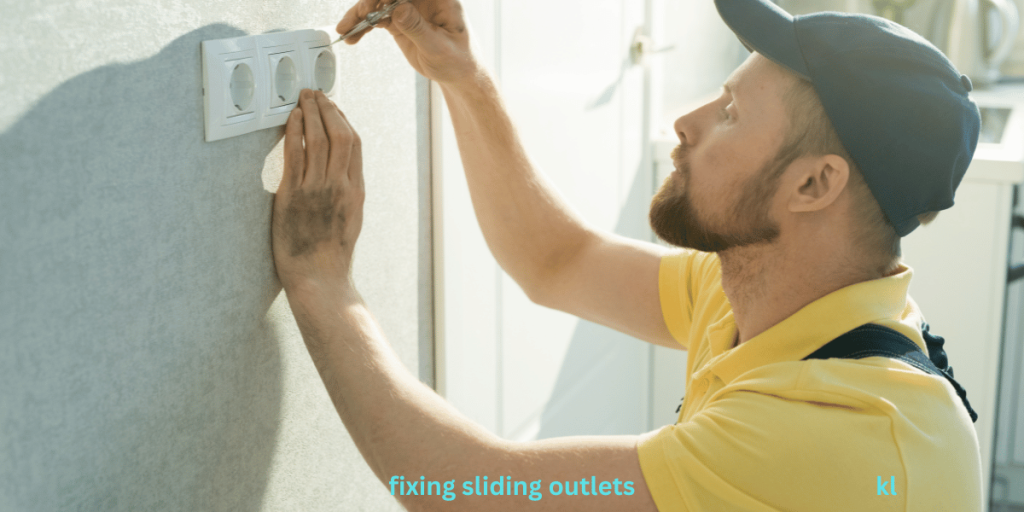
Checking for Common Household Hazards (Small Objects, Cords, etc.)
Here’s a tip that saved me from many a mini heart attack: get down on your hands and knees and see the world at your baby’s level. Suddenly, loose change, paper clips, and buttons that once seemed harmless become potential choking hazards.
Make it a habit to keep these out of reach or tucked safely away. Adding “babyproofing essentials” like drawer organizers can help you keep tiny objects in check.
Cords, oh the cords! I didn’t realize how many cords I had until I started this process—phone chargers, window blind strings, you name it. Invest in cord winders or wall clips to keep them secured and out of the way. It’s one of those small changes that makes a big impact.
How to Babyproof a Kitchen
Ah, the kitchen—the room that requires a whole checklist on its own! One quick win is to use cabinet locks on lower cabinets, especially those that house cleaning supplies or glassware.
Move anything sharp or heavy to higher shelves. I also found silicone stove knob covers to be a simple but effective deterrent for curious hands.
And don’t forget to babyproof the fridge! I was surprised to learn that little ones are strong and clever enough to pull it open, so a refrigerator lock isn’t a bad idea. The same goes for the trash can if it isn’t tucked away in a cabinet.
Monitor, fire and carbon dioxide safety
Another key piece of the newborn safety puzzle is setting up a reliable baby monitor and security system. Keeping a watchful eye on your little one, even when you’re in another room, can provide some much-needed peace of mind.
Place the monitor in the nursery in a spot that gives you a clear view and audio feed, and consider adding extra cameras in other areas of the house.
And of course, don’t forget about fire and carbon monoxide safety. Make sure your home is equipped with working smoke detectors and CO monitors, and create an emergency plan so you know exactly what to do in case of an emergency.
Stocking up on essential baby safety gear, like fire extinguishers and first aid kits, is also a good idea.
At the end of the day, babyproofing isn’t about creating an untouchable fortress. It’s about reducing risks and giving yourself the peace of mind to enjoy your time with your baby without constantly hovering.
It’s a learning process, but each step you take helps create a safer environment where your little one can explore and grow.
Preparing the Kitchen and Feeding Areas
One of the most overlooked, yet most rewarding, parts of getting ready for a newborn is setting up your kitchen and feeding areas. Trust me, it’s worth the time to plan this out. When it’s 3 a.m. and you’re fumbling in the dark for a bottle or the right burp cloth, you’ll thank your past self for the effort.
Here’s how to create a baby-friendly setup that will make those late-night feedings and daytime prep sessions a lot smoother.
Setting Up a Dedicated Space for Bottle Prep and Breastfeeding Essentials
First things first: find a corner of your kitchen or dining area that you can dedicate to baby bottle preparation space. Whether you’re planning to bottle feed or breastfeed and supplement, having everything in one place is a game-changer.
Choose a spot near a sink, if possible, to make rinsing bottles and pump parts more convenient. A small cart or designated counter space works well for storing bottles, bottle warmers, and a sterilizer.
Organize this space so that the essentials are at arm’s reach. One mistake I made early on was spreading things out across different drawers and cupboards, which just made me feel scattered.
I learned quickly to consolidate everything into one space. Keep a stack of clean bottles, nipples, and lids neatly stored in a sectioned tray or bin. If you’re using formula, keep a pre-measured container or scoop handy so that mixing bottles is quick and easy.

Organizing Baby Bottles, Sterilizers, and Drying Racks
Organizing baby bottles, sterilizers, and drying racks doesn’t have to be complicated. Dedicate one or two shelves in a cabinet to bottles and feeding tools.
Use clear containers or bins to separate bottles from pacifiers, teething toys, and pump parts. Sterilizers and drying racks can take up a lot of space, so if your kitchen is on the smaller side, look for compact versions that fold away when not in use.
When it comes to drying racks, go for one with multiple pegs and compartments so you can air-dry everything without mixing it all up.
I also recommend a drying mat for larger items like breast pump flanges or mixing containers. It’s one of those baby storage solutions that’s simple but makes a world of difference.
Keeping Your Fridge Stocked with Essentials (and Why This Matters)
Keeping the fridge stocked is not just about having food for yourself—although that’s vital too because hungry parents are not happy parents. It’s about ensuring that any expressed milk or prepared formula is easily accessible for late-night feedings.
Dedicate a small section of the fridge for your baby’s bottles and milk storage bags. Use a labeled container to keep everything organized, so you’re not digging around in the middle of the night.
Stock your fridge with newborn basics like pre-washed fruits for quick snacks (because, let’s face it, self-care often means eating a banana while holding a fussy baby), and milk or formula that’s ready to go. This preparation not only helps with baby supply management but also reduces stress during those chaotic moments.
Additional Tips for Feeding Stations and Diaper Stations
Consider setting up a mini feeding station in the nursery or living room, especially if you’re planning to nurse during the night. This can include a comfortable chair, a small table for your water bottle, and a basket stocked with burp cloths, nursing pads, and even a book or your phone charger.
And while we’re at it, don’t forget about the diaper station. Keep this organized with easy-to-grab essentials: diapers, wipes, diaper cream, and a change of clothes. It’s all about minimizing the time spent searching for things when you’re half-asleep.
Creating a Comfortable Living Space
When it comes to creating a space that’s both comfortable and functional for your newborn, there’s a lot to think about—especially when you’re trying to balance comfort with safety.
I remember feeling overwhelmed trying to figure out what baby gear would actually work and what was just a trendy item that might end up collecting dust.
Here’s how to build a newborn-friendly home setup that’s both practical and soothing, starting with baby gear, creating comfy nap spaces, and reducing allergens
Baby Swings, Bouncers, and Floor Mats: What Works for a Newborn?
One of the first things I realized about baby gear is that there’s a lot of hype, but not everything is necessary or works for every baby.
Baby swings, bouncers, and floor mats all fall under this category. These items are meant to provide a comfortable, safe spot for your baby to rest, but each one serves a slightly different purpose.
The best baby swing for newborns can be a lifesaver, especially when you need a moment to get something done (or just to take a deep breath).
A swing with multiple reclining positions and gentle rocking is often comforting for babies, helping them drift off to sleep. I’ve had great success with swings that mimic the motions of a parent, which are super soothing for babies.
On the other hand, baby bouncers are perfect for when your little one is awake and alert, giving them a safe and comfy spot to kick their legs and observe the world.
Bouncers are generally compact, making them easy to move from room to room, so you can always keep your baby close by.
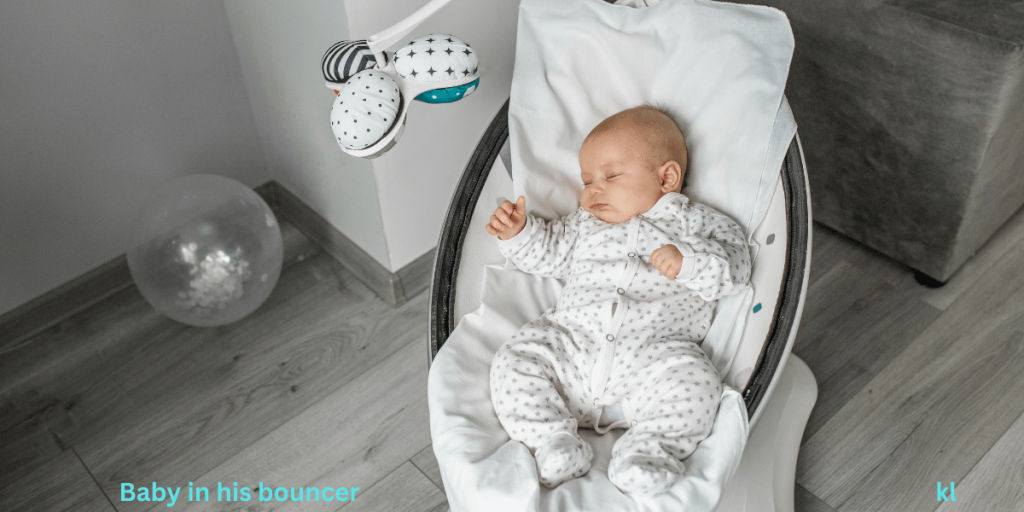
And then there are floor mats, which I found to be a must-have for tummy time. These mats provide a soft, supportive surface for your baby to practice those all-important motor skills in a safe way.
Setting Up Cozy, Safe Spots for Daytime Naps and Playtime
Creating cozy, safe spots for daytime naps and playtime is essential. During the day, your newborn will likely sleep multiple times (hopefully), and having a designated spot can make all the difference. I learned the hard way that babies don’t always sleep well in places that are too loud or cluttered, so keeping their sleep space quiet and serene is key.
For daytime naps, I recommend setting up a designated crib or bassinet in a low-traffic area. Some parents swear by portable bassinets that you can easily move around the house, but the key is keeping the newborn sleep environment safe and calm.
Keep the area dim and quiet, especially if you’re using a baby swing or bouncer for the times when you need them to stay awake.
When your baby’s awake and ready to play, having a soft, clean baby floor mat is perfect. Look for one with colorful patterns and textures to stimulate your baby’s senses while they practice tummy time.
Having baby-friendly living room setups means creating space in the room that’s safe, comfortable, and engaging for your little one. And don’t forget about baby gear for newborns like play gyms or mobiles that encourage development.
Creating a Clean and Soothing Environment to Reduce Allergens
A clean environment is essential for both your baby’s comfort and health. Newborns are especially sensitive to allergens, and even a bit of dust or pet dander can trigger uncomfortable reactions.
Creating a soothing nursery and living space means paying attention to cleanliness, especially in areas where your baby will spend a lot of time.
Start with keeping the home quiet for a newborn. Avoiding loud noises or excessive traffic around their sleep areas can help create a more peaceful environment.
Regularly vacuuming, washing baby clothes with baby-safe detergent, and using an air purifier can significantly cut down on allergens. I also kept the nursery well-ventilated and made sure to wash all of the baby’s bedding, blankets, and soft toys regularly to avoid the buildup of dust mites.
Investing in high-quality baby-friendly furniture that’s easy to clean, like a wipeable changing table or a washable rocking chair, helps maintain a tidy environment.
Keeping clutter to a minimum around your baby’s area can help reduce dust and allergens, making sure that when your little one is resting or playing, they’re in a clean and fresh environment.
Managing Laundry and Baby Clothing
Managing baby laundry can feel like an endless task, especially when you’re sleep-deprived and running on fumes. But trust me, with a few organizational strategies, you can streamline the process and keep your baby’s wardrobe fresh, clean, and ready to go.
The key is to stay on top of it without stressing about every little stain. Let’s dive into how I tackled the laundry chaos in my house and some tips I learned along the way.
Sorting, Washing, and Folding Baby Clothes Effectively
The first lesson I learned as a new parent was that baby clothes seem to multiply faster than rabbits. Seriously, it felt like I was washing a load of laundry every other day, between the blowouts and spit-ups.
What helped me the most was setting up a system for sorting and washing baby clothes to make the process as efficient as possible.
Start by sorting baby clothes into categories: everyday wear, sleepers, and clothes for special occasions. For the most part, your baby will be in onesies and sleepers, so focus on those first.
It also helps to separate items by color—especially with those inevitable baby stains (like diaper blowouts, which I swear are sent from another dimension). For clothes that have stains, I found pre-treating with a stain remover before washing worked wonders.
As far as washing goes, I learned the hard way that newborn laundry tips aren’t one-size-fits-all. Since baby skin is so sensitive, I opted to wash their clothes in smaller loads to avoid any fabric softener or detergent residue.
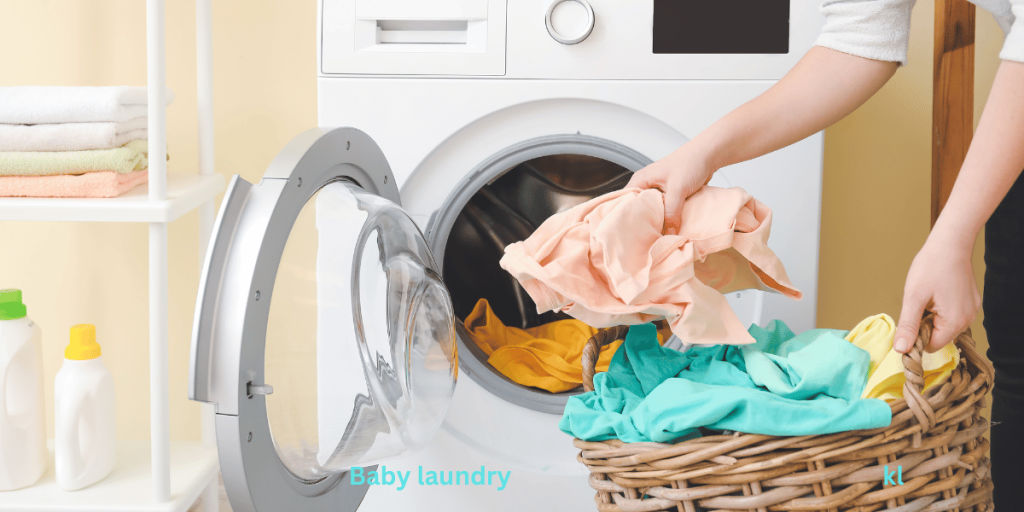
Washing clothes on a gentle cycle with cold water helps preserve the fabric and keeps the clothes soft for your baby’s sensitive skin.
When it comes to folding, it’s all about simplicity. I separated clothes by size and type so I didn’t waste time digging through a drawer every morning.
I kept newborn sizes in one bin, and as they grew, I rotated out clothes that no longer fit and swapped them for the next size up. Honestly, this made life so much easier when it came time to get baby-dressed for the day!
Using Baby-Safe Detergents and Fabric Softeners
If there’s one thing I’ve learned, it’s that baby-safe detergent matters—a lot. Babies have sensitive skin, and using harsh chemicals or fragrances can lead to skin irritation, rashes, or worse.
I made sure to pick a detergent that was specifically designed for babies. It’s formulated to be gentle and hypoallergenic, and it’s free from dyes, fragrances, and other irritants.
I also switched to a baby-safe fabric softener (or sometimes skipped it altogether) because those softeners you usually use can be way too harsh for babies.
If you want your baby’s clothes to feel extra soft without risking irritation, you can try using a natural or fragrance-free fabric softener, but I found that the detergent alone was enough to keep their clothes soft. Plus, avoiding too many products on baby clothes reduces the chances of allergic reactions, which is always a win.
Self-Care Spaces for New Parents
Becoming a new parent is a whirlwind of joy, stress, and exhaustion all wrapped into one. Between late-night feedings, diaper changes, and the constant need for cuddles, it’s easy to forget about taking care of yourself.
But trust me, the better you take care of yourself, the better you’ll be able to care for your little one. Creating a dedicated self-care space for moments of rest and relaxation is crucial, and it’s not just about having a comfy spot to sit—it’s about making sure you have everything you need to recharge and bond with your baby.
Creating a Space for Rest, Relaxation, and Bonding with the Baby
When I first became a parent, I didn’t realize how essential it was to carve out a space for rest. Sure, you’ll spend most of your time with your baby in the nursery, but what about a spot just for you to relax?
A corner with a cozy chair, soft lighting, and everything you need for a few moments of peace can work wonders. If you’re nursing or bottle-feeding, I highly recommend a safe rocking chair for the nursery. Not only is it great for late-night feedings, but it’s also an excellent spot to bond with your baby.
The gentle rocking motion helps both you and your little one feel calm, especially during those middle-of-the-night sessions when you’re both a little more exhausted.
I made sure that my self-care space was also close to where my baby slept, so I could keep an eye on them and feel connected even during my moments of rest. Keep in mind that self-care isn’t about isolation; it’s about finding ways to recharge while still being available for your baby’s needs.

Stocking Up on Essentials for Late-Night Feeds
Anyone who has gone through those first few weeks of nighttime feedings knows the drill: you’re up every couple of hours, and you need to make it as smooth as possible. That’s where setting up for late-night nursing or bottle-feeding comes in.
Think about what you’ll need and set up a small station nearby. For me, it was a lifesaver to have a basket or table with essentials like a water bottle, some healthy snacks (because, honestly, you’ll be starving at 2 a.m.), and maybe even some comfy pillows to prop up my arms or back during those marathon feedings.
Preparing for Midnight Diaper Changes
Let’s talk about preparing for midnight diaper changes. Just when you think you’ve gotten the hang of things, your baby will decide to wake up, and it’s time for a quick change. Having a designated area for diapering in your self-care space is so helpful, especially when it’s hard to get out of bed.
I kept a small diaper caddy with wipes, diapers, and ointments by the rocking chair, so I didn’t have to wander around at midnight searching for supplies.
It’s also a good idea to have a changing pad or blanket within reach, so you can do quick diaper changes without waking up the whole house. Having this setup minimized the disruption and made things easier when I was tired beyond belief.
Easy Access to Books, Music, or Podcasts to Make Downtime More Enjoyable
During those quiet, late-night moments, I found that listening to something comforting or reading a book was a lifesaver. Whether it was a soothing playlist, an audiobook, or a podcast about parenting, it helped pass the time and gave me a break from the sheer exhaustion.
I loved keeping a small stack of books on hand that I could quickly grab when I had a free minute. I also downloaded a few calming podcasts about self-care and parenting—anything that gave me a little escape while still focusing on my role as a mom.
If you’re not into reading, consider music or guided relaxation apps, which I found really helpful in making those first few months feel less overwhelming. Whatever you choose, make sure it’s something that helps you relax and unwind, not add more stress.
Preparing your home for a newborn isn’t just about functionality; it’s about creating a space where you, as new parents, feel prepared and supported. By taking these steps and preparing ahead, you’ll have more time to bond and enjoy those precious first weeks with your baby.
And remember, every home is different, so tailor these tips to what suits your space best. Ready to get started? Start prepping today, and embrace the peace of mind that comes with a newborn-ready home!




